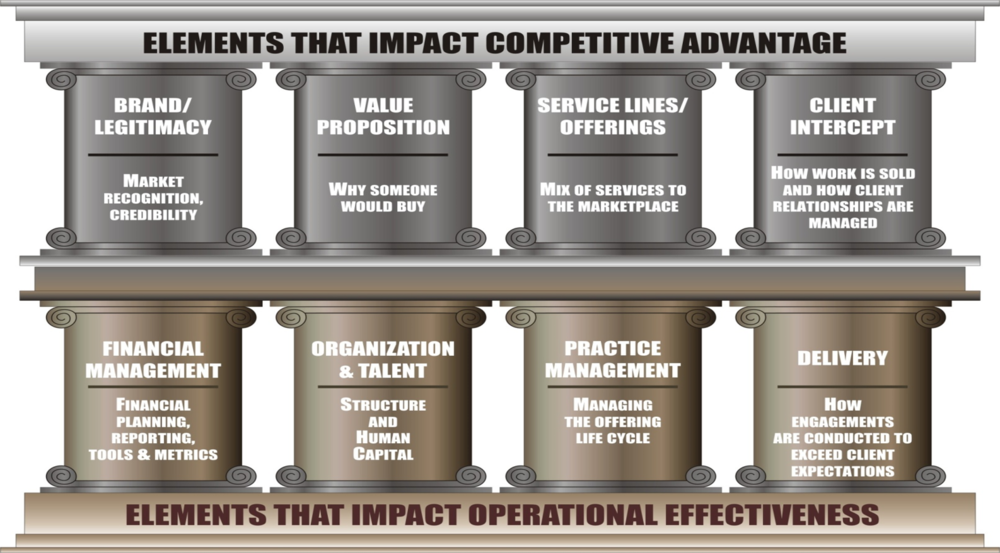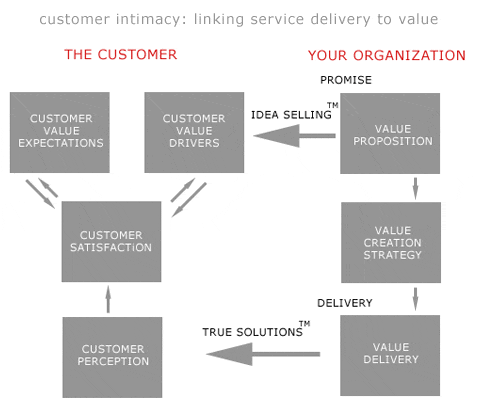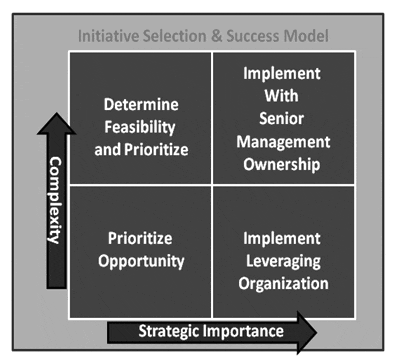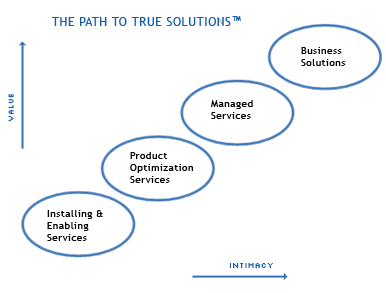In the simplest sense, marketing has a direct role in market strategy, participation strategy, and enabling the success. Because of their unique role and perspective on the business, marketing owns or is heavily involved in the strategy of the business, and often drives the decision-making process of how to address commoditization issues.
These include:
• Expanding product lines to leverage current channels
• Acquiring market share and thereby eliminating competitors
• Moving to a platform offering
• Moving to a suite of products that can be sold in a bundle format
• Moving to the True Intimacy™ model.
All of these and other strategies make sense at different times and for different reasons and many times they need to be combined in order to deliver the transformation required. We believe that the Intimacy Engine™ should always be considered as a mechanism to change the paradigm of a business that is experiencing or will be experiencing the crushing cycle of innovation that does not yield the long term price differential needed to support the growth and profit margins of a sustainable business.
Marketing is key in assisting the organization in gaining an understanding of what’s at stake. Marketing has a future view of the business and therefore brings that to the discussion – often line executives must be immersed in the day to day do not have the time or maybe the information to question what can be different and what direction to go.
All significant product portfolio changes including the adoption of the Intimacy Engine™ require significant investment, process changes, leading new buyers, creating new messages, but the Intimacy Engine™ takes advantage of what we have today and what markets we’re in. It moves up the organization to executive buyers and provides a portfolio of things they are interested in. Furthermore, it allows the pull through of the existing products and services.
We have seen several marketing executives take the lead in getting their organizations head around the power and journey of the Intimacy Engine™.
Below are the steps used by one of our clients as they lead their company’s business model transformation.
• Market Participation strategy
Use these questions as inputs to the process:
– Which Markets/segments must you win in to continue your growth and margin requirements?
– What markets/segments do you do you need to move into, whether to take from competitors or to leverage your product strategy
– What capabilities do you have that can be leveraged in a True Solution™?
Often, your customers think of themselves as part of a vertical business segment – pharma, food and beverage, energy etc. It is important when discussion an Intimacy Engine™ business that this perspective is used as the overriding structure.
• Business Model development
A model can be developed to explain the investment and return rate including timing should be developed for the organization. This will most likely include a lengthy discussion of the True Intimacy business model, its components, benefits, and other unique attributes. Also, where to pilot the model should be identified and reasoning provided.
• Socialization Effort
The Marketing Executive is the perfect executive to take the lead in getting the broader management team on board. This often requires intellectual material, and an event set aside for the team to gather and go through and develops an understanding of the power and impact the Intimacy Engine™ can provide.
• Pilot Implementation
This by definition is a combined, collaborative effort between a line executive and marketing to assure that appropriate resources are allocated – often new hires are required, for example. But, it is important that the broader executive team stay deeply evolved in the pilot’s progress – this will provide support for the inevitable challenges that occur, and the broadest understanding of the power of the model to be understood.
Obviously, there are significant efforts made during the pilot on offer development, market messaging and go to market messaging. Although these are quite different than traditional offers and messaging they follow the same process and must be properly enabled for success.






